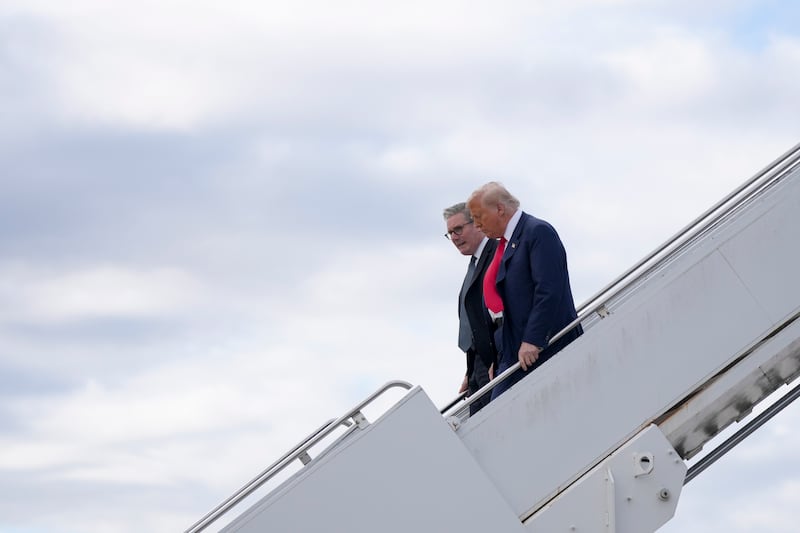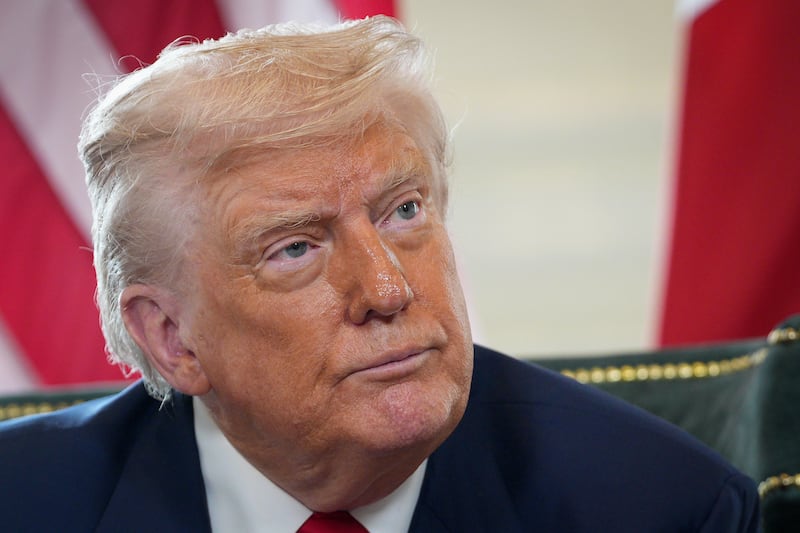It’s hard to imagine anything more supine and bootlicking than Keir Starmer’s Trump strategy. It’s almost too excruciating to watch.
When, at last Monday’s meeting in Scotland, the US president insulted a key ally and friend of the UK prime minister’s (London mayor Sadiq Khan), referring to him as a “nasty person”, Starmer could only laugh it off, saying “he’s a friend of mine”.
And since when has a UK leader ever been forced into the role of guest (the event took place at Donald Trump’s Turnberry golf resort) when meeting a foreign leader on home soil?
A human rights lawyer by trade, Starmer has largely refrained from calling out Israel for its murderous assault on civilians in Gaza for fear of deviating too much from US foreign policy.
He is even said to have run his Palestinian state recognition plan by Trump before announcing it.
In contrast to his domestic policy agenda, which is littered with U-turns, Starmer has been nothing if not consistent when it comes to the US, offering Washington almost complete obedience.
Back in May when the UK agreed a very lopsided trade deal with the US, which applied a 10 per cent tariff on UK exports, there was a perception that the EU, with an eye on China’s hardball stance, would drive a harder bargain.
The bloc, after all, plays gatekeeper to the biggest and richest consumer market in the world.
But after months of talking tough, threatening counter measures and anti-coercion instruments, the EU has effectively copied Starmer’s template, capitulating almost entirely to Trump’s wrecking-ball agenda.

Since when has a UK leader ever been forced into the role of guest when meeting a foreign leader on home soil? Photograph: Tierney L. Cross/ The New York Times
Even Canada and Mexico, which have potentially more to lose (more of their national income is tied into trade with the US), have pushed back harder against Trump.
The preliminary EU-US agreement allows for a 15 per cent across-the-board tariff rate on EU exports, a far cry from the zero-for-zero deal initially offered by European Commission president Ursula von der Leyen, while committing the EU to big purchases of US energy and armaments.
For its part, the EU has reduced tariffs on most US imports, in some cases to zero, while giving US exporters unprecedented access to Europe’s 450 million-strong consumer market.
Justifying the terms of the deal, von der Leyen even adopted one of the central Maga talking points, namely that the EU’s transatlantic trade with the US needed to be “rebalanced”, a reference to the EU’s big trade surplus (in goods) with the US.
Previously EU leaders argued that the trading relationship with the US was not out of balance as the bloc buys far more services from US than it sells to them, making up for the lopsided nature of the goods trade.
The EU’s Common Commercial Policy (CCP), whereby member states delegate authority to the Commission to broker trade deals on their behalf, is seen by many as the jewel in the EU’s crown.
Farmers here may rail against the EU’s environmental policies but Irish food and drink exports, now valued at a record €17 billion per annum, are in dozens of markets across the world largely because of the EU’s CCP.
The bloc’s negotiators are known to drive hard in trade talks. They took 10 years to reach a trade deal with Canada. They jumped out of negotiations with Australia in 2023 when Canberra upped its demand for access to the EU’s beef, lamb and dairy markets.
This time the bloc rolled over.
Despite the spin coming from Brussels about the deal providing stability and trade certainty, “Trump bludgeoned the EU on trade,” as one CNN headline put it.
Most of the analysis suggests the EU was over a barrel because of disagreement between member states (the herding 27 cats narrative); the US’s transatlantic security guarantee; and the need to maintain US support for Ukraine. But the deal came with little or no security guarantees and no additional pledges around Ukraine.

While tariffs in the short term will improve the US’s trade balance, they will come at the expense of higher prices domestically. Photograph: Christopher Furlong/ Getty Images)
Trump, despite the tough guy rhetoric, has largely played a passive role when it comes to Ukraine and Gaza, allowing belligerent leaders in Russia and Israel free rein.
There is also a worry that Trump, handed such an easy victory, will come back for more or at least find pretexts to extract more concessions.
From Ireland’s perspective, the 15 per cent tariff on pharma, the main element of the State’s export trade with the US, represents damage but controlled damage in the context of a global retreat from free trade.
The Irish pharma industry here makes big profits and can – according to insiders – absorb the 15 per cent hit without uprooting itself. Multinational investment plans work to 10-year cycles and are hardly likely to switch tack on the basis of six months of Trump-induced volatility.
The nightmare scenario for Ireland would be for a Pfizer to transfer all or part of its operations here back to the US in response to US protectionism.
The calculus in Brussels might be to let Trump play out his tariff plan which most economists believe will blow up in his face.
While tariffs in the short term will improve the US’s trade balance, they will come at the expense of higher prices domestically, something that could destabilise the US economy and pave the way from another bruising encounter with bond markets.
